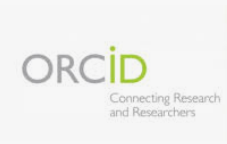Home fortification with micronutrient powders. Technical guidelines for health personnel
Keywords:
dietary supplements, micronutrients, nutritional anemias, counselling.Abstract
Introduction: Home fortification of food with micronutrient powders is considered an effective intervention to reduce iron deficiency anemia and other deficiencies in the child population.
Objective: To provide technical guidelines for health personnel at the primary healthcare level to support the supplementation of children between 6 and 23 months of age with micronutrient powders.
Methods: The technical team was established. The formulations used in the region and the experience gained in interventions conducted in eastern provinces were reviewed. Moreover, a document on scientific evidence was prepared based on the nutritional recommendations for this population.
Results: The supplement allowed the prevention of nutritional deficiencies as it could cover the gaps in their requirement. Technical guidelines directed to health personnel at different healthcare levels were available to ensure the success of nutritional counselling to the Cuban family, and the adequate use of the supplement.
Conclusions: This work provides elements and technical guidelines for the training of health personnel to socialize, disseminate and provide technical tools in the use of the supplement as a cost-effective measure for the prevention of micronutrient deficiencies.
Downloads
References
Food Security Information Network. Global report on food crises: joint analysis for better decisions. [Internet]. FSIN; 2021. [cited 2022 oct 24]. Available from: https://medbox.org/dl/61bcab215ad7a006ee616ff2
Organización de las Naciones Unidas para la Alimentación y la Agricultura, Fondo Internacional de Desarrollo Agrícola, Fondo de las Naciones Unidas para la Infancia el Programa Mundial de Alimentos, Organización Panamericana de la Salud. Panorama regional de la seguridad alimentaria y nutricional - América Latina y el Caribe 2022: Hacia una mejor asequibilidad de las dietas saludables [Internet]. Santiago de Chile: FAO/FIDA/UNICEF/WFP/OPS; 2023 [citado 24 ene 2023]. Disponible en: https://iris.paho.org/bitstream/handle/10665.2/57048/9789251375372_spa.pdf?sequence=7&isAllowed=y
Xiaoyu Jiang , Yangfen Chen, Jieyong Wang. Global Food Security under COVID-19: Comparison and Enlightenment of Policy Responses in Different Countries. Foods. [Internet]. 2021 [cited 2022 nov 18];10(11):2850. Available from: https://mdpi-res.com/d_attachment/foods/foods-10-02850/article_deploy/foods-10-02850.pdf?version=1637228936
Gombart AF, Pierre A, Maggini S. A Review of Micronutrients and the Immune System–Working in Harmony to Reduce the Risk of Infection. Nutrients. [Internet]. 2020 [cited 2022 nov 18];12(1):236. Available from: https://mdpi-res.com/d_attachment/nutrients/nutrients-12-00236/article_deploy/nutrients-12-00236-v2.pdf?version=1579770340
World Health Organization. Iron deficiency anemia assessment prevention and control: a guide for program managers. WHO; 2001.
World Health Organization. Assessing the iron status of populations: including literature reviews. [Internet]. Switzerland: WHO/CDC; 2004. [cited 2022 nov 18]. Available from: https://apps.who.int/iris/bitstream/handle/10665/75368/9789241596107_eng.pdf?sequence=1&isAllowed=y
Fondo de las Naciones Unidas para la Infancia. Estado Mundial de la Infancia 2019: Niños, alimentos y nutrición: Crecer bien en un mundo en transformación: Resumen ejecutivo. [Internet]. Nueva York: UNICEF; 2019. [citado 18 nov 2022]. Available from: https://www.unicef.org/media/61091/file/Estado-mundial-infancia-2019-resumen-ejecutivo.pdf
Zavaleta N, Astete-Robilliard L. Efecto de la anemia en el desarrollo infantil: Consecuencias a largo plazo. Rev Peru Med Exp Salud Pública. [Internet]. 2017 [citado 8 feb 2023];34(4):716-22. Disponible en; https://www.redalyc.org/pdf/363/36353911020.pdf
Pita-Rodríguez G, Jiménez-Acosta S, Basabe-Tuero B, Macías Matos C, Selva Suárez L, Hernández Fernández C, et al. El bajo consumo de alimentos ricos en hierro y potenciadores de su absorción se asocia con anemia en preescolares cubanos de las provincias orientales. 2005-2011 Rev Chil Nutr [Internet]. 2013 [citado 8 feb 2023];40(3):224-34. Disponible en: https://www.scielo.cl/pdf/rchnut/v40n3/art03.pdf
Pita-Rodríguez G, Jiménez-Acosta S. La anemia por deficiencia de hierro en la población infantil de Cuba. Brechas por cerrar. Revista Cubana de Hematología, Inmunología y Hemoterapia. [Internet]. 2011 [citado 8 feb 2023];27(2):179-95. Disponible en: http://scielo.sld.cu/pdf/hih/v27n2/hih03211.pdf
Dirección de Registros Médicos y Estadísticas de Salud, Fondo de la Naciones Unidas para la Infancia. Encuesta de Indicadores Múltiples por Conglomerados
: Informe de resultados de la encuesta. [Internet]. La Habana: Dirección de Registros Médicos y Estadísticas de Salud; 2020. [citado 8 feb 2023]. Disponible en: https://www.unicef.org/cuba/media/3551/file/MICS6_Cuba-2019_compressed.pdf%20.pdf
United Nations Children's Fund. Home Fortification with Micronutrient Powders (MNP). [Internet]. Dhaka: UNICEF/WFP. [cited 2023 feb 8]. Available from: http://www.hftag.org/assets/downloads/hftag/Sight%20&%20Life%20supplement%20distributed%20at%20ICN%202013_FULL.pdf
Tam E, Keats EC, Rind F, Das JK, Bhutta ZA. Micronutrient Supplementation and Fortification Interventions on Health and Development Outcomes among Children Under-Five in Low- and Middle-Income Countries: A Systematic Review and Meta-Analysis. [Internet]. Nutrients 2020 [cited 2023 feb 8]; 12:289. Available from: https://mdpi-res.com/d_attachment/nutrients/nutrients-12-00289/article_deploy/nutrients-12-00289-v2.pdf?version=1581572380
Home Fortification Technical Advisory Group. Programmatic guidance brief on use of micronutrient powders (MNP) for home fortification. [Internet]. HF-TAG. [cited 2023 feb 8]. Available from: http://www.hftag.org/assets/images/site/hftag/HF-TAG_Program-Brief-Dec-2011.pdf
Downloads
Published
How to Cite
Issue
Section
License
La Revista Cubana de Higiene y Epidemiologia protege los derechos de autor, y opera con una Licencia Creative Commons 4.0.(Licencia Creative Commons Atribución-No Comercial 4.0 Internacional (CC BY-NC 4.0).Al publicar en ella los autores permiten copiar y redistribuir el material en cualquier medio o formato; remezclar, transformar y crear a partir del material. Debe reconocer adecuadamente la autoría, proporcionar un enlace a la licencia http://creativecommons.org/licenses/by-nc/4.0/ e indicar si se han realizado cambios. No puede utilizar el material para una finalidad comercial. No hay restricciones adicionales.
Los autores autorizan la publicación de sus escritos conservando los derechos de autoría, y cediendo y transfiriendo a la revista todos los derechos protegidos por las leyes de propiedad intelectual que rigen en Cuba, que implican la edición para difundir la obra.
Los autores podrán establecer acuerdos adicionales para la distribución no exclusiva de la versión de la obra publicada en la revista (por ejemplo, situarla en un repositorio institucional o publicarla en un libro), con el reconocimiento de haber sido publicada primero en esta revista.




